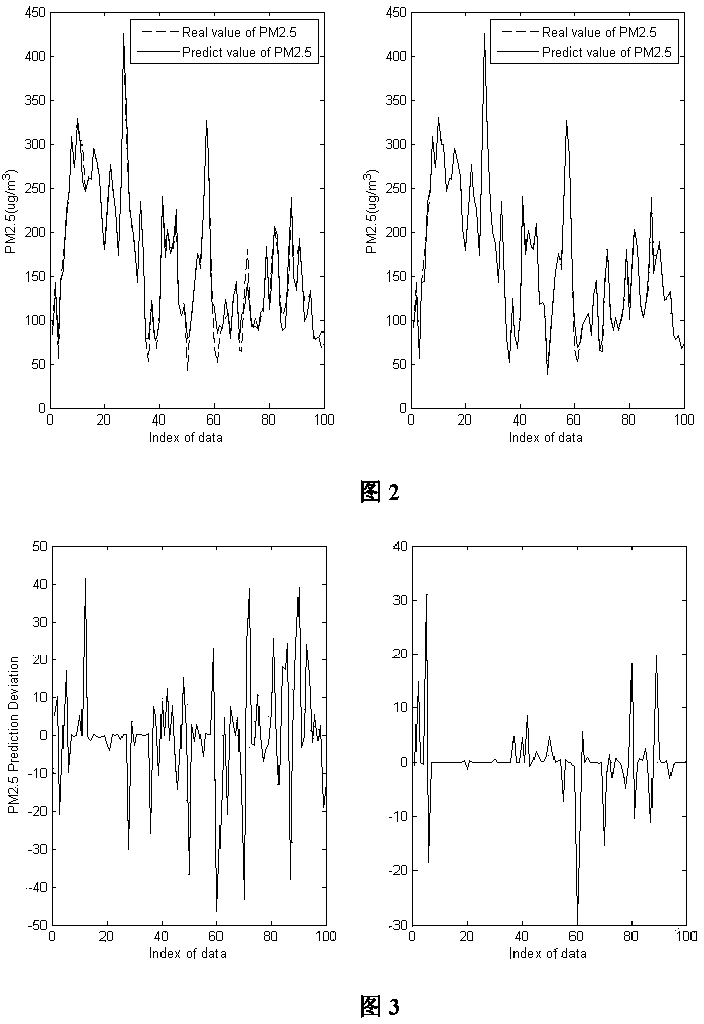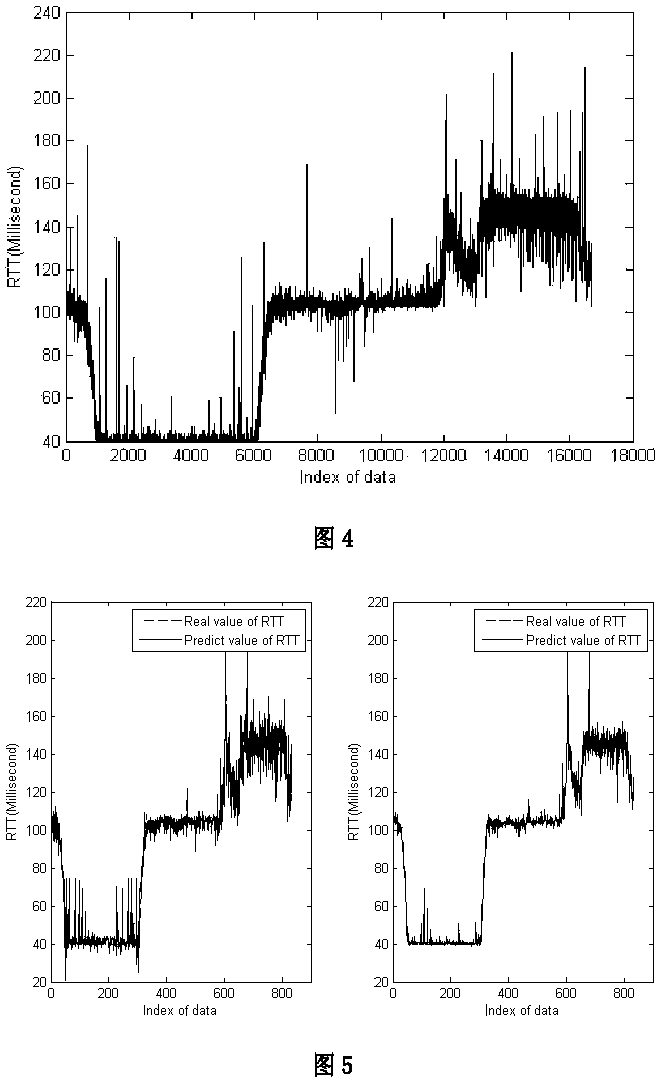Method for using improved neural network model based on particle swarm optimization for data prediction
A neural network model and particle swarm optimization technology, applied in the field of neural network models, can solve problems such as the difficulty of determining the number of neurons in the hidden layer and the impact of RBF neural network performance.
- Summary
- Abstract
- Description
- Claims
- Application Information
AI Technical Summary
Problems solved by technology
Method used
Image
Examples
Embodiment 1
[0050] Example 1: as attached figure 1 As shown, the improved neural network model based on the particle swarm optimization algorithm is used in the data prediction method, and the steps are as follows:
[0051] Step 1: Representation of data samples, using variables represents the ith sample, using represents the t-th component of the i-th sample;
[0052] Step 2: Data preprocessing, construct training sample set X based on data samples train ={x 1 ,x 2 ,…,x N} and the test sample set X test ={x 1 ,x 2 ,…,x K};
[0053] Step 3: Initialize the parameters of the RBF neural network, and determine the number N of neurons in the input layer according to the dimension M of the training sample set input =M, the number N of neurons in the output layer is determined according to the dimension of the data to be predicted output =P;
[0054] Step 4: Use the binary particle swarm optimization algorithm to determine the number of hidden layer neurons and the center of the h...
Embodiment 2
[0064] Step 14: Use the RBF neural network model for data prediction, use the test sample set as the input sample of the RBF neural network model, and use the established RBF neural network model to predict unknown data. The hidden layer of the RBF network model adopts The radial basis kernel function, the radial basis kernel function formula is xi represents the input sample, c i Represents the center of the kernel function of the ith neuron in the hidden layer, σ represents the width of the kernel function, using the formula Calculate the predicted output value of the RBF neural network model, that is, the predicted value of the unknown data. Embodiment 2: The difference from the above embodiment is that step 4 includes the following sub-steps:
[0065] Sub-step 401: Initialize the parameters of the binary particle swarm optimization algorithm, and use N for the number of initialized particle swarms. swarm Representation; randomly initialize the position of the particle...
Embodiment 3
[0077] Embodiment 3: The difference from the above embodiment is that step 8 includes the following sub-steps:
[0078] Sub-step 801: construct a kd tree (k-dimensional tree) according to the k-nearest neighbor algorithm (k-NN) and the values of each dimension of the particles in the particle swarm;
[0079] Sub-step 802: According to the kd tree search principle, find the k nearest neighbor particles of each particle, that is, the top(k) particles;
[0080] Sub-step 803: Determine the optimal particle p in the neighborhood of each particle according to the fitness function values of the k nearest neighbor particles obtained by the search lbest ;
[0081] Sub-step 804: k=k+1, that is, the neighborhood of each particle expands the range of one particle in the next iteration, until the value of k is equal to the size of the particle swarm, k=N l-swarm .
PUM
 Login to View More
Login to View More Abstract
Description
Claims
Application Information
 Login to View More
Login to View More - R&D
- Intellectual Property
- Life Sciences
- Materials
- Tech Scout
- Unparalleled Data Quality
- Higher Quality Content
- 60% Fewer Hallucinations
Browse by: Latest US Patents, China's latest patents, Technical Efficacy Thesaurus, Application Domain, Technology Topic, Popular Technical Reports.
© 2025 PatSnap. All rights reserved.Legal|Privacy policy|Modern Slavery Act Transparency Statement|Sitemap|About US| Contact US: help@patsnap.com



